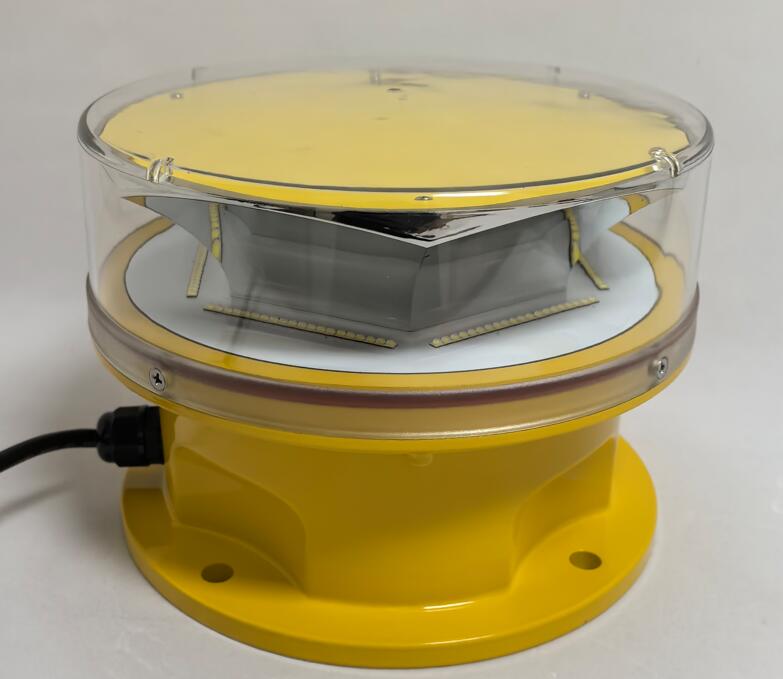In the vast and complex world of aviation, safety is paramount. Among the many technologies designed to prevent accidents, obstruction lamps play a crucial role. These specialized lights are installed on tall structures—such as communication towers, wind turbines, and skyscrapers—to alert pilots of potential hazards, especially during low visibility conditions. This article explores the importance, types, and regulatory standards of obstruction lamps, highlighting their indispensable role in modern aviation.
Why Obstruction Lamps Are Essential
Aviation safety relies heavily on visual and electronic aids to prevent collisions. Obstruction lamps serve as a critical visual warning system, ensuring that pilots can identify tall structures from a distance. Without these lights, aircraft could inadvertently collide with obstacles, leading to catastrophic consequences.

The primary functions of obstruction lamps include:
Enhancing Visibility – By emitting bright, high-intensity light, these lamps make structures visible both day and night.
Preventing Collisions – Pilots rely on these lights to navigate safely, especially in poor weather conditions.
Compliance with Regulations – Aviation authorities mandate the use of obstruction lamps on tall structures to meet safety standards.
Types of Obstruction Lamps
Different structures require different types of obstruction lamps, depending on their height and location. The main categories include:
1. Low-Intensity Obstruction Lamps (L-810)
These are used on structures below 45 meters (148 feet). They emit steady red light and are typically installed on buildings, cranes, and smaller towers.
2. Medium-Intensity Obstruction Lamps (L-864/L-865)
For structures between 45 and 150 meters (492 feet), medium-intensity lamps are required. They can operate in steady or flashing modes, usually in white or red.
3. High-Intensity Obstruction Lamps (L-856/L-857)
Structures exceeding 150 meters must use high-intensity flashing white lights. These are extremely bright and visible from long distances, ensuring maximum safety for aircraft.
4. Dual Lighting Systems
Some installations combine red steady-burning lamps with white flashing lights for enhanced visibility. This dual system is often used on very tall structures like telecommunication towers.
Regulatory Standards for Obstruction Lamps
To ensure uniformity and effectiveness, obstruction lamps must comply with international aviation regulations. Key standards include:
ICAO (International Civil Aviation Organization) – Sets global guidelines for obstacle lighting.
FAA (Federal Aviation Administration) – Regulates lighting requirements in the United States.
EASA (European Union Aviation Safety Agency) – Oversees European standards.
These organizations specify the color, intensity, and placement of obstruction lamps to maintain consistency across different regions.
Technological Advancements in Obstruction Lamps
Modern obstruction lamps incorporate advanced technologies to improve efficiency and reliability:
LED Lighting – Energy-efficient and long-lasting, LED-based obstruction lamps are replacing traditional incandescent bulbs.
Solar-Powered Systems – Ideal for remote locations, solar-powered lamps reduce dependency on electrical grids.
Smart Monitoring – Some systems now include remote diagnostics to detect failures and ensure continuous operation.
Challenges and Future Trends
Despite their effectiveness, obstruction lamps face challenges such as:
Light Pollution – Excessive brightness can affect nearby communities. Solutions include directional lighting and adaptive intensity controls.
Maintenance – Regular inspections are necessary to ensure functionality, especially in harsh weather conditions.
Future trends may involve:
Automated Adjustments – Lights that adapt to weather conditions for optimal visibility.
Integration with Air Traffic Systems – Enhanced coordination between ground-based lighting and aircraft navigation systems.
Obstruction lamps are a fundamental component of aviation safety, preventing collisions and ensuring compliance with international standards. As technology evolves, these lights will become even more efficient and reliable, further safeguarding air travel. Whether on a skyscraper or a wind turbine, obstruction lamps silently perform their duty, guiding pilots safely through the skies.
By understanding their importance, we can appreciate how these unassuming lights contribute to the seamless operation of global aviation.

